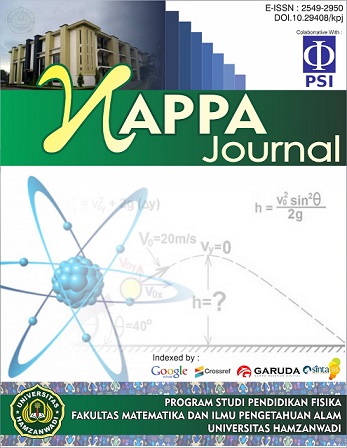Pengaruh Suhu Terhadap Crosswind dan Tailwind di Bandara I Gusti Ngurah Rai Dengan Metode Regresi
DOI:
https://doi.org/10.29408/kpj.v7i1.17606Keywords:
Crosswind, tailwind, LST, SSTAbstract
A study of the effect of runway surface temperature (LST) and sea surface temperature (SST) on crosswind and tailwind in 2012-2021 at Ngurah Rai Airport in Bali has been carried out using the regression method. The purpose of this study was to find out what percentage of LST and SST affect crosswind and tailwind events and how LST and SST influence crosswind and tailwind events at I Gusti Ngurah Rai Airport. Based on the results of monthly calculations from 2012-2021, the influence of LST and SST on crosswind and tailwind only has an effect of 0.8-47.7%. Where the greatest influence occurred in the crosswind from the right plane in May, which was 47.7%. Meanwhile, the influence of LST and SST on the biggest tailwind occurred in November at 22.5%, with the overall percentage in all months showing that LST and SST have a weak relationship to crosswind or tailwind. The influence is quite strong only on the right crosswind in May and the left crosswind in March. However, the size of the influence of LST and SST must still be considered because there are several significant months, especially in the left crosswind and tailwind which can be seen in the results of the F-test. In the right crosswind and tailwind the effect of SST is greater than that of LST, while for the left crosswind it is the other way around.References
Aryanti, R. D. (2020). Analisis Komponen Angin Pada Landasan Pacu Bandara Internasional Soekarno-Hatta. Jurnal Buletin Metaero, 3 (9). 26-32.
Bachtiar, A., dan Hayattul, W. (2018). Analisis Potensi Pembangkit Listrik Tenaga Angin PT. Lentera Angin Nusantara (LAN) Ciheras. Jurnal Teknik Elektro ITP, 7 (1). 35-45.
Fadholi, A. (2013). Analisis Komponen Angin Landas Pacu (Runway) Bandara Depati Amir Pangkalpinang. Statistika, 13 (2). 45 – 53.
Habibie, N. M., Sasmito, A., dan Kurniawan, R. (2011). Kajian Potensi Energi Angin di Wilayah Sulawesi Dan Maluku. Jurnal Meteorologi dan Geofisika, 12 (2). 181-187.
Hizbi, T., Wadji, B., dan Fartina. (2020). Pengaruh Penguasaan Matematika Terhadap Prestasi Belajar Siswa Pada Pokok Bahasan Kinematika Gerak. Kappa jurna, 4 (2). 263-268.
Ishak, S., Lukito, L. (2020). Analisa Pengaruh Arah Dan Kecepatan Angin Saat Take Off dan Landing di Bandara Adisutjipto Yogyakarta. Jurnal Sainstek Stt Pekanbaru, 08 (02). 91-95.
Kaparang, N. E., dan Hermawan E. (2010). Analisis Perilaku Angin Di Lapisan 850 hPa Hasil Observasi Data WPR Dikaitkan Dengan Perilaku Data Indeks Monsun Global Di Indonesia. Jurnal Sains Dirgantara, 8 (1). 1-24
Perkasa, W. (2005). Singnifikan atau Sangat Signifikan. Jurnal Buletin Psikolog UGM, 13 (1). 38-44.
Sumaja, K., Syahdian, A. S., Satriyabawa, I. K. M. (2019). Analysing Crosswind, Headwind, And Tailwind At I Gusti Ngurah Rai Airport For Aircraft Risks Assessment During Take-Off And Landing Process. https://www.researchgate.net/publication/354066002_ANALYSING_CROSSWIND_HEADWIND_AND_TAILWIND_AT_I_GUSTI_NGURAH_RAI_AIRPORT_FOR_AIRCRAFT_RISKS_ASSESSMENT_DURING_TAKE-OFF_AND_LANDING_PROCESS
Wajdi, B., Safiruddin., Novianti, B. A., dan Zahra, L. (2020). Pengolahan Sampah Pelastik Menjadi Bahan Bakar Minyak (BBM) Dengan Metode Pirolisis Sebagai Energi Alternatif. Kappa Jurnal, 4 (1). 100-112.
Wiguna, I. P. A. P., dan Yuliara, I. M. (2019). Penentuan Persamaan Empiris Percepatan Tanah Di Wilayah Bali Berdasarkan Data Gempa Bumi Periode 2008-2016. Kappa jurnal, 3 (2). 71-78.
Yuliara, I. M. (2016). Regresi Linier Berganda, Modul. Universitas Udayana, Bali.



